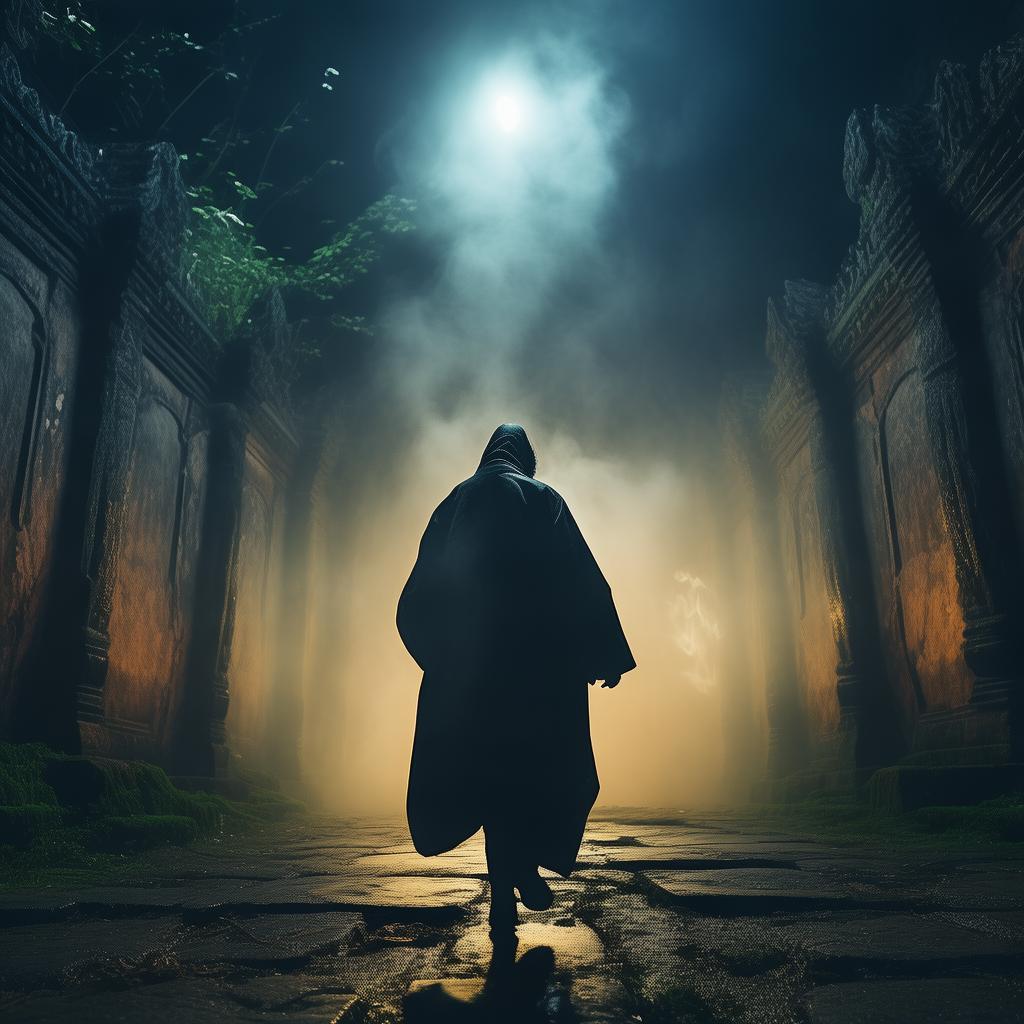The Silent Strings of Sorrow
The old studio was a relic of Japan's golden age of film, a place where dreams were birthed and shadows lingered. It stood at the end of a narrow alley, its facade peeling and its windows fogged with the breath of forgotten stories. The present occupants, a group of young, ambitious filmmakers, had no idea of the studio's haunted history until the night of their first shoot.
The director, Akira, was a man of passion and vision, but his latest project was his most personal. "The Silent Strings of Sorrow" was a film about the unspoken grief that haunts the lives of those left behind after a tragic loss. The setting was a studio that seemed to breathe with its own life, a place where every corner whispered secrets and every room held memories.
The crew arrived late that night, their excitement mingled with a sense of unease. The producer, Mika, had always been a pragmatist, but even she felt an inexplicable chill as they stepped inside. The equipment was set up in the dimly lit room, and the actors were in place, their faces lit by the glow of the monitor.
Akira stood at the helm, his eyes scanning the room. "Okay, let's start," he said, his voice echoing through the empty studio. The actors began their lines, but something was off. The sound was muffled, as if coming from a great distance. Mika adjusted the sound levels, but the problem persisted.
As the night wore on, strange occurrences began to pile up. The camera crew noticed that the camera lens occasionally fogged up, even though the room was well-ventilated. The actors would occasionally hear whispers, though no one was present to speak. Akira, usually the calmest of men, found himself on edge, the weight of the supernatural pressing down on him.
The climax of the scene was a pivotal moment in the film, a confrontation between the living and the dead. As the actors performed, the room seemed to grow colder, and the whispers grew louder. Suddenly, the lights flickered, and the sound of a violin cut through the silence. The violin was a haunting melody, one that Akira recognized from his own childhood.
He turned to Mika, his eyes wide with fear. "It's my mother's violin," he whispered. Mika's face paled, and she quickly checked the timeline of the film. "It's not in the script," she said, her voice trembling.
The next day, the crew gathered to discuss the events of the previous night. Akira confided in them, explaining the significance of the violin. Mika suggested they abandon the project, but Akira was determined to uncover the truth.

They decided to delve deeper into the studio's history. The studio had been abandoned for decades, a victim of time and neglect. They discovered that it had been the site of a tragic love story, one that ended in heartbreak and death. The violin had belonged to the woman, a talented actress who had taken her own life after her lover left her.
The revelation was chilling. The studio was haunted, not by ghosts, but by the sorrow of a woman who had never found peace. As the crew delved deeper, they realized that the spirit was not malicious; it was simply seeking solace.
The next night, they decided to confront the spirit. Akira took the violin and played a piece he had composed for his mother. The room fell silent, and the whispers ceased. The spirit seemed to listen, and for a moment, there was a sense of peace.
The crew decided to finish the film, but this time with a different perspective. "The Silent Strings of Sorrow" became a story not just of loss, but of the enduring power of love and the hope of finding solace in the afterlife.
As the film wrapped, the studio seemed to breathe easier. The crew left, their mission completed, but the studio's legacy lived on. The old studio, once a place of sorrow, had become a place of healing, a testament to the enduring power of love and the hope of redemption.
The Silent Strings of Sorrow became a cult classic, a film that spoke to the hearts of many. The studio, now a museum, stood as a reminder of the unseen hauntings that can be found in the most unexpected places, and the lessons they can teach us about life, love, and the enduring spirit of humanity.
✨ Original Statement ✨
All articles published on this website (including but not limited to text, images, videos, and other content) are original or authorized for reposting and are protected by relevant laws. Without the explicit written permission of this website, no individual or organization may copy, modify, repost, or use the content for commercial purposes.
If you need to quote or cooperate, please contact this site for authorization. We reserve the right to pursue legal responsibility for any unauthorized use.
Hereby declared.









